
Digital Transformation in Fashion (+Examples)
- Published:
- Updated: May 28, 2024

The fashion industry may have many passing trends, but digital transformation isn’t one of those. It’s here to stay. Digital transformation in fashion includes everything from design to retail. It’s about using innovations like AI and IoT to create new avenues for growth.
This article covers examples of transformative technologies in the fashion industry. You’ll also find actionable strategies to accelerate organizational change and meet market expectations.
What Is Digital Transformation in Fashion?
Digital technologies are fundamentally reshaping fashion processes. Apparel design used to happen with sketches and physical prototypes. Now, advanced design software can help to create virtual prototypes. That powers faster iterations and greater creativity.
Manufacturing processes are also changing because of process automation, robotics, AI, and cloud software like ERP systems. That leads to increased efficiency and reduced time to market. Every stage of fashion can benefit from digital transformation.
Benefits of Digital Transformation in the Fashion Industry
Digital transformation doesn’t just allow you to stay ahead of the curve. It provides tangible benefits for your brand. Let’s explore how digital technologies can revolutionize operations and power better decision-making.
1. Reducing costs
Margins can make or break a business. That’s why optimizing costs is key. Digital transformation offers opportunities to streamline operations and cut expenses. For example, fashion brands can achieve greater visibility with the right technology in their supply chain. RFID technology enables real-time inventory tracking. That reduces the risk of overstocking.
Blockchain technology can also support transparency. It makes it easier to manage issues like counterfeit products. This is important because sales losses from counterfeit goods worldwide cost billions of dollars.
2. Improved customer experience
Offering excellent customer experiences is a must. Digital transformation empowers fashion brands to deliver personalization and meet expectations. This keeps customers loyal. It also encourages them to make more purchases.
With data analytics, fashion brands gain insights into customer preferences and purchasing habits. Then they can tailor their products and promotions accordingly. Research from McKinsey found that companies that excel at personalization generate 40% more revenue from those activities than average players.
Digital transformation also empowers fashion brands to deliver a cohesive omnichannel experience. Customers can expect consistent branding when browsing online or via a mobile app.
Through all their digital channels, brands can build meaningful relationships. By delivering relevant content and personalized recommendations, brands can also build trust with their customer base.
3. Better decision-making
Trends may come and go in the blink of an eye, but data-driven decision-making is essential for staying ahead of the curve. With real-time data analytics, fashion brands can access up-to-the-minute insights into sales performance and customer behavior. This allows them to make more informed decisions.
Predictive analytics also has promise in fashion. By analyzing historical data and external factors like social media trends and economic indicators, fashion brands can anticipate shifts in consumer preferences. That way, they can adjust their inventory accordingly, minimizing stockouts and maximizing sales.
With insights like these brands can identify untapped market opportunities and create targeted marketing campaigns that resonate with their target audience. That allows them to meet expectations and even get ahead of the competition.
Fashion Digital Transformation Challenges
Digital transformation in the fashion industry is exciting, but it isn’t free of hurdles. From finding resources for these investments to reputational risks. Navigating these challenges requires careful planning. Here’s what you should know.
1. Regulations
Along with the power of data and automation, brands must navigate a complex web of regulatory requirements. They need to protect consumer privacy and ensure the ethical use of technology.
For example, fashion brands need to pay attention to the General Data Protection Regulation (GDPR) in the European Union. These regulations impose strict requirements on how companies collect and process personal data.
Artificial intelligence and automation technologies present ethical dilemmas for fashion brands. For example, they need to make sure that the AI they implement doesn’t show any information to customers or employees that’s based on harmful biases.
2. Cost of technology
The promise of digital transformation is enticing. However, the upfront costs of implementing new technologies can be prohibitive for many fashion brands. This is especially true for smaller players with limited resources.
The total investment includes the cost of purchasing and implementing the technology. Plus, you need to factor in training employees and the time it takes to integrate new systems into existing workflows.
Beyond that, fashion brands must budget for ongoing maintenance and updates. This includes expenses related to software licenses and cybersecurity measures. Having everything up to date greatly reduces the risk of costly errors or breaches.
3. Reputational risk
Costs aren’t the only concern regarding cybersecurity threats and data breaches. Fashion brands must also consider reputational risks. A single breach can result in financial losses and damage customer relationships.
From counterfeit products to fake social media accounts brands must stay aware. This requires monitoring online channels for unauthorized activity. It also requires employees to understand the appropriate ways to engage with digital tools.
Examples of Digital Transformation in Fashion
Digital transformation is bringing new levels of efficiency and creativity to the industry. Look at these examples of how digital transformation is changing fashion.
1. Apparel business management software
Apparel business management software solutions like ApparelMagic and Centric PLM streamline fashion business operations. From inventory management to order processing, these software solutions provide fashion brands with the tools they need to be successful.
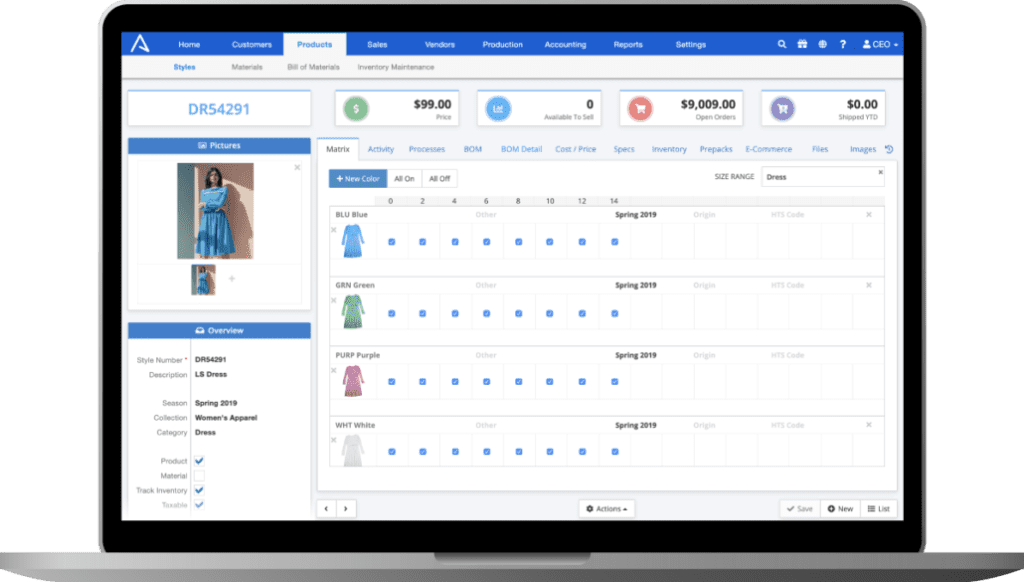
For example, the golf apparel brand Swannies has seen massive growth since implementing ApparelMagic. In terms of revenue, Swannies is now approximately 100 times the size from when they started using the system. The platform has continuously scaled alongside Swannies, providing the necessary tools and support to navigate their surge.
2. Apparel design software
Apparel design software like Adobe Illustrator and CLO 3D empower designers to bring their creative visions to life in a digital environment. These advanced tools allow for virtual prototyping and 3D rendering. This way, designers can iterate quickly and experiment with different styles.
For example, Adobe encourages people to take a cue from professional fashion illustrators and experiment with different subject matter, clothing items, and materials. It’s never been easier to turn a spark of inspiration into a design.
3. Enterprise resource planning (ERP) software
ERP software solutions like SAP and Oracle NetSuite help fashion brands manage business operations seamlessly. ERP systems provide a centralized platform for integrating and automating core business processes. They also provide real-time visibility, which makes it possible for fashion brands to make more informed decisions.
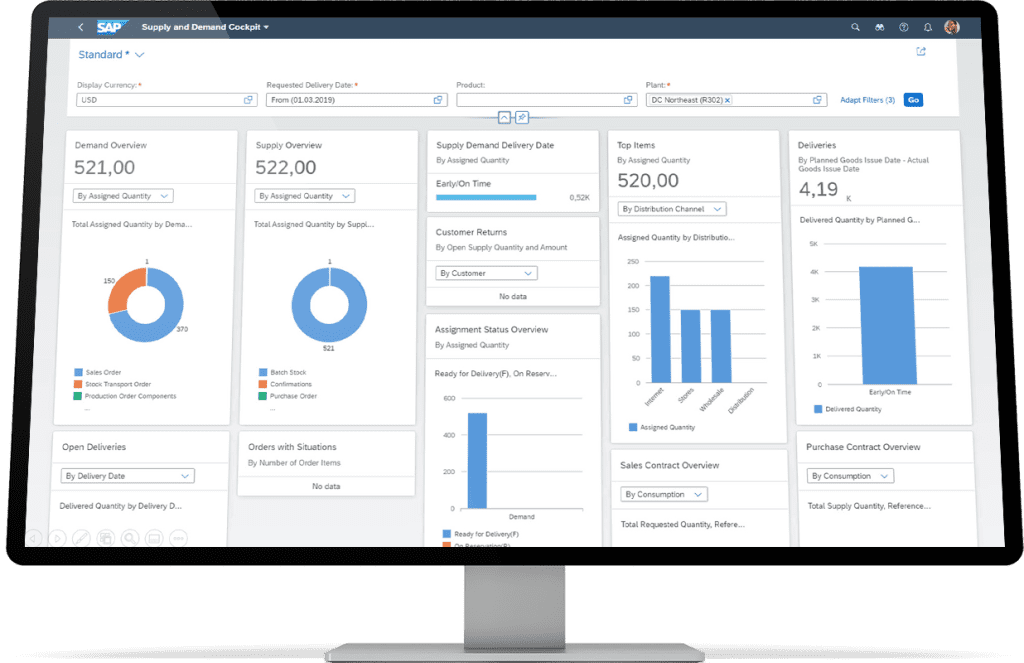
For example, SAP S/4HANA allows brands to amplify brand value by managing the complete lifecycle of the fashion business—from manufacturing to wholesale and retail—on one platform.
4. Digital clienteling software
Digital clienteling software solutions like Salesforce Commerce Cloud change how fashion brands engage with their customers. With customer data and predictive analytics, these platforms power personalized shopping experiences across touchpoints.
Salesforce Commerce Cloud provides a unified commerce and marketing experience for retailers of all sizes. Fashion brands can use Salesforce to deliver engaging customer experiences across all channels
5. AI-powered inventory management
AI-powered inventory management systems use advanced algorithms and machine learning techniques to optimize inventory levels. These systems can predict future demand patterns and recommend stocking strategies. This ensures the right products are available at the right time.
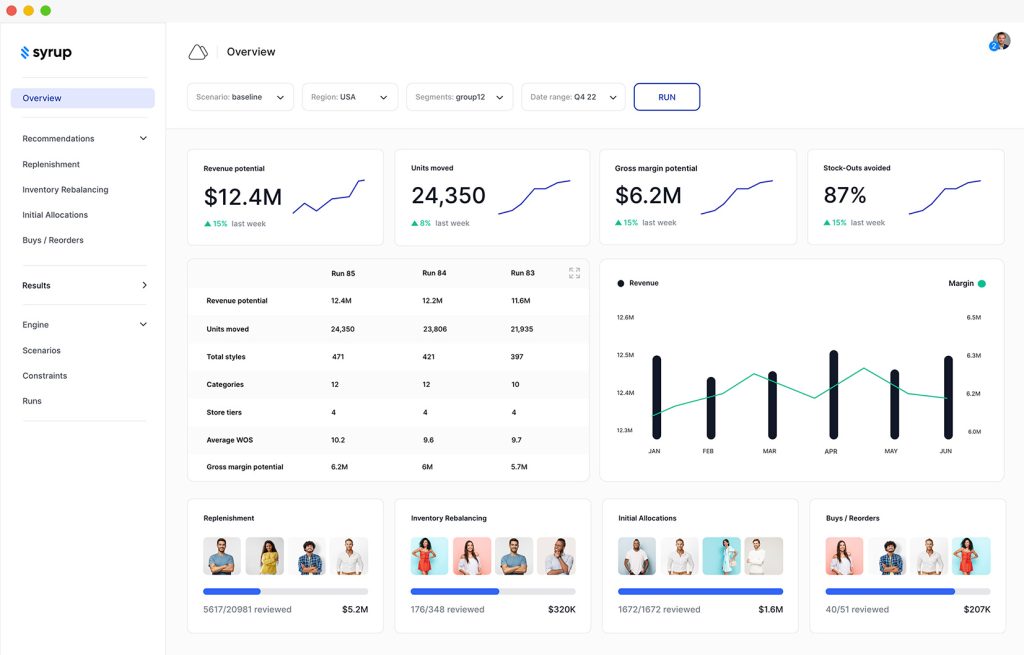
For example, Syrup’s AI-powered recommendation engine helps brands sell more at full price while minimizing excess inventory. Real-time recommendations power better decisions about allocation, replenishment, rebalancing, and reorders.
6. Digital showrooms
Digital showrooms use virtual reality (VR) and augmented reality (AR) technologies to create immersive and interactive experiences. Brands can showcase their entire collections in a digital environment. That allows buyers to explore products in detail and visualize them in different settings.
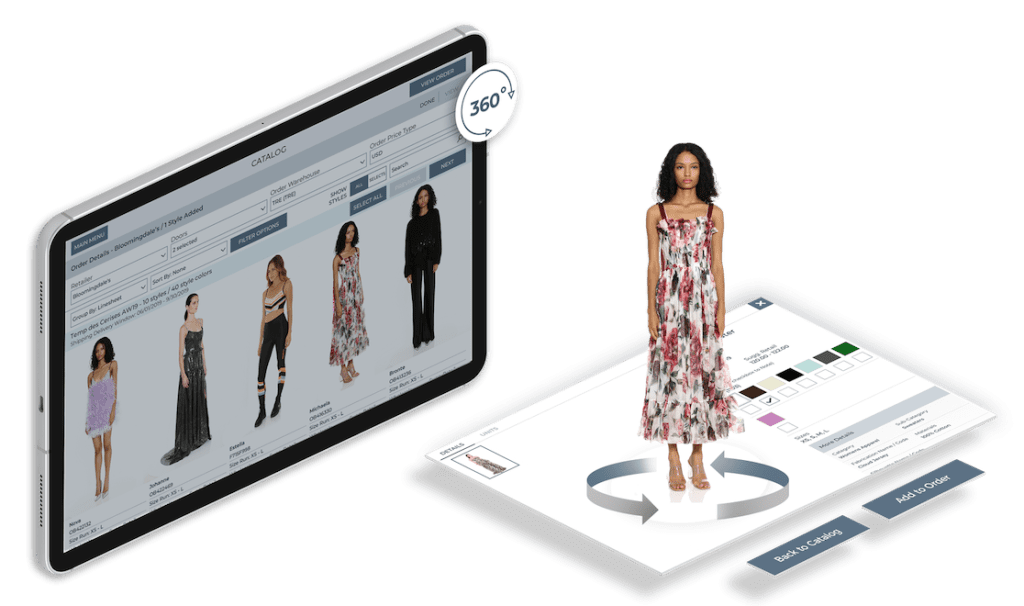
JOOR’s virtual showroom makes it possible to easily showcase the brand story and products with customizable drag-and-drop templates, hi-res product images, engaging videos, and shoppable digital line sheets.
7. Automated quality control
Automated quality control systems use computer vision and machine learning to inspect and analyze products for defects and inconsistencies. When adding automation to the quality control process, fashion brands can ensure that their products meet the highest standards of quality and consistency. They also reduce the need for manual inspection and rework.
DeSL’s cloud-based solutions enable companies to ensure products are made to specification. Technology also allows for garment quality control to be checked at the factory and approved before shipment.
8. Augmented body measurement software
Body measurement software solutions like BodyBlock AI and 3DLOOK allow fashion brands to offer personalized sizing recommendations to their customers. Using smartphones or specialized scanning devices, these solutions can recommend the best-fitting sizes for individual customers.
3DLOOK provides solutions to brands that need accurate human body measurements to create more personalized experiences that reduce costs and increase sales, engagement, and customer loyalty.
9. Digital sourcing platforms (DSP)
Digital sourcing platforms connect fashion brands with suppliers and manufacturers worldwide. These platforms provide a centralized marketplace where brands can discover new suppliers and manage orders efficiently.
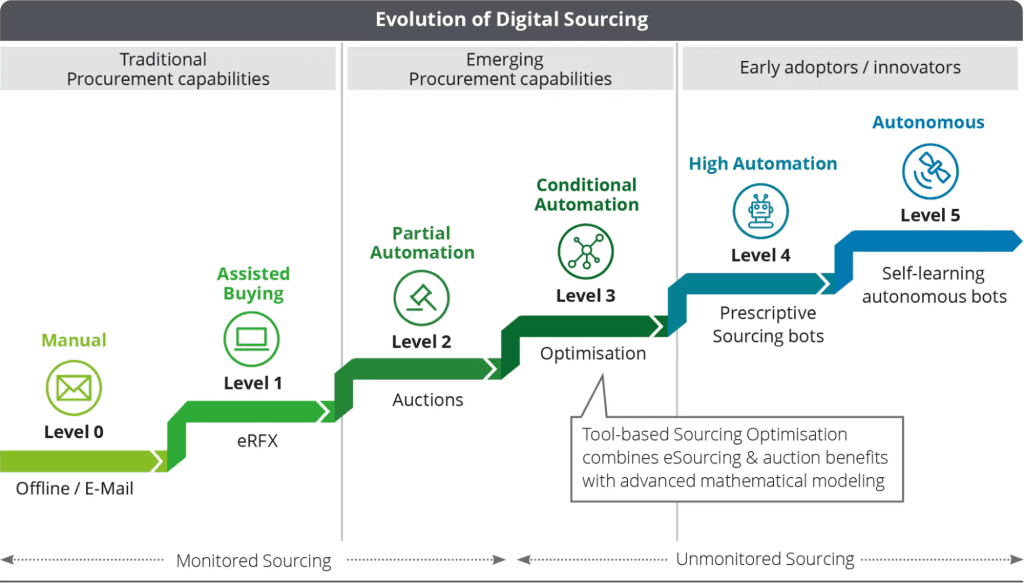
According to Deloitte, these platforms usually include a combination of spend analytics, eSourcing, contract management, and eProcurement (eCatalogs, eInvoicing), among others. The solutions are procurement mainstays for many organizations and will remain relevant for the foreseeable future.
10. Predictive analytics
Predictive analytics tools like those from IBM empower fashion brands to anticipate future trends and customer demand. This makes it possible to capitalize on market opportunities more effectively.

IBM Decision Optimization is a prescriptive analytics solution that enables highly data-intensive industries to make better decisions and achieve business goals by solving complex optimization problems. Business leaders use this tool to improve their efficient use of resources.
Digital transformation is challenging, costly, resource-intensive, and has lengthy implementation and migration cycles. To complicate matters, all digitalization projects are different.
Accelerate your fashion digital transformation by enabling your technology end-users (internal staff and customers) with contextual in-app guidance and real-time support with Whatfix’s digital adoption platform (DAP).
Whatfix provides application owners and IT teams at fashion and retail companies with a no-code editor to create in-app assistance that contextually guides end-users through complex processes and digital experiences. This enables them to utilize digital platforms correctly and drive business outcomes.

This reduces time-to-proficiency for new end-users and achieves new levels of productivity and proficiency through better software adoption post-implementation. It also provides customers with self-service, personalized, and guided user experiences.
Whatfix empowers fashion organizations to:
- Create in-app Tours, Flows, and Task Lists that guide employees and customers step-by-step through digital processes and applications, from end-user onboarding to reinforcement training on complex, multi-step digital processes.
- Enable end-users with Self Help, providing a searchable help wiki that connects to all your process documentation, requirements, FAQs, help articles, and more – that overlays on your digital UI.
- Notify end-users of application process updates, compliance changes, company announcements, and more with Pop-Ups and Beacons.
- Provide contextual Smart Tips that enable end-users with timely information that nudges users to take the correct in-app action.
- Use Field Validation to ensure data is entered in full, in the correct format.
- Collect end-user feedback such as client NPS, staff training and onboarding feedback, and bug identification with In-App Surveys.
- Analyze end-user behavior with User Actions and Enterprise Insights by tracking custom in-app events to optimize user journeys, segment users into cohorts, identify areas of friction, track software license usage, and more.
With Whatfix, you can enable your end-users with contextual, guided, and self-service experiences to help them drive value from digital investments and maximize their productivity. It also actively works to identify areas of end-user friction to continuously optimize user experiences and build user-friendly digital solutions.
This makes it easier to adjust software training and adoption strategies. All to empower fashion employees and customers to maximize the value of digital tools and complete tasks with ease.
Ready to learn more? Request a demo to see how fashion software clicks better with Whatfix now!

Thank you for subscribing!


